Overview of cacti with leaves
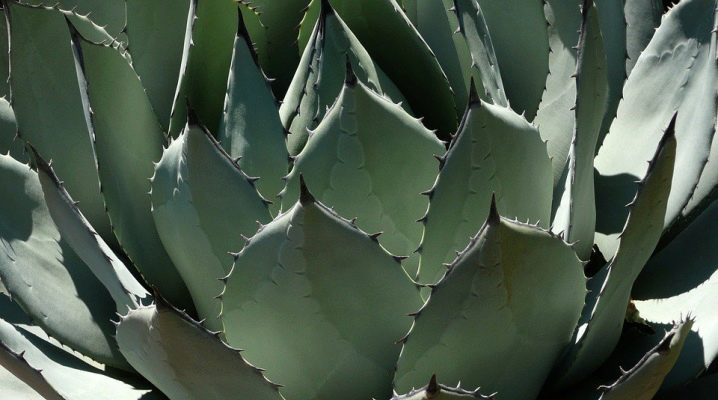
Cacti are considered the most unpretentious plants, as they do not require a lot of water and are able to withstand rather harsh environmental conditions, but only an inexperienced gardener thinks so. In this article, we will provide a detailed overview of cacti with leaves.
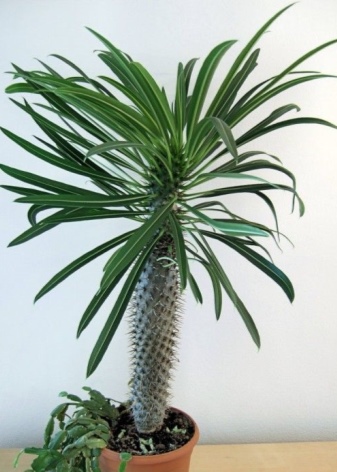

Varieties and names of leafy succulents
The variety of cacti species, their names are explained by adaptation to different habitat conditions. The most widespread among indoor cacti are the following.
- "Pachypodium" is popularly known as a cactus with leaves at the tip of the "stem". He deserves recognition as the most unusual representative of indoor plants, whose tissues have the ability to store water. The Greeks also called this variety "fleshy leg". It fully justifies this name, because in the wild it is capable of reaching 1.5 meters in width, and even more in height. An indoor plant can reach a height of no more than a meter. It is due to its thick stem that the Pachypodium successfully accumulates a large volume of liquid. Many plant species are protected by thorns. These spiky spines are grouped in 3 pieces. If we consider the internal components of the plant, then it can be noted that it has a transparent cell sap. The life span of the Pachypodium varies from 3 to 15 years. Among the numerous varieties, the following varieties can be noted: "Madagascar Palm", "Pachypodium Saunders", "Pachypodium Zhayi", "Pachypodium South".
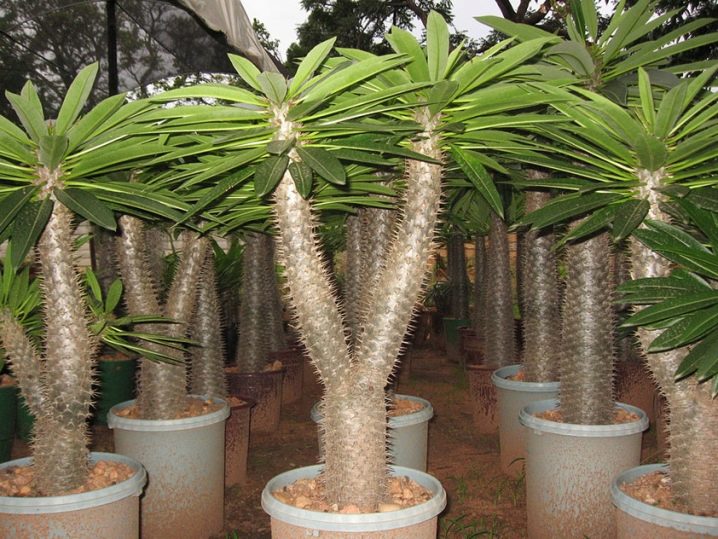
- Another equally interesting and famous cactus with leaves is "Pereskia". It has many varieties that differ both in their shape and in flowering and color. The general characteristics of "Pereskia" indicate that the plant is not tall, has relatively small petals (up to 25 cm) and a stem with thorns. Germination of these very thorns can be both single and group. The peculiarity of this cactus is that at the end of the flowering period, the entire bright shade seems to pass from the fallen petals to the fleshy stem of the cactus. Most gardeners characterize "Pereskia" as a plant with a long and unique flowering, a short period of growth and development. It is a plant that exudes a pleasant scent. Leafy cactus can be divided into varieties: "Pereskia prickly", "Pereskia orange", "Pereskia Weber", "Pereskia Godssefa" and others.
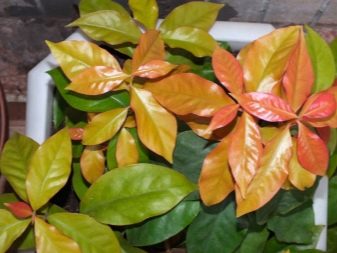
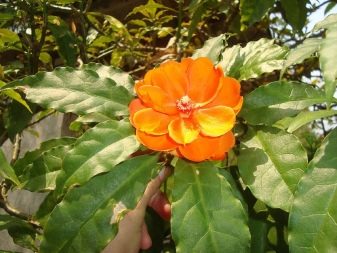
- The ability to grow Epiphyllum at home everyone has, but, unfortunately, not everyone can provide a cactus with decent flowering. The absence of leaves in a cactus is compensated by long, flat (sometimes triangular) stems. Hybrids of "Epiphyllum" are more common, therefore, an active increase in the number of varieties has recently begun. The stems of the plant are fleshy, there are notches along the periphery. Epiphyllum flowers are large and can reach 6 cm in radius. A diverse range of colors has not only the shades familiar to everyone, but also all kinds of overflows. Another plus for the plant is the fragrant flowering.
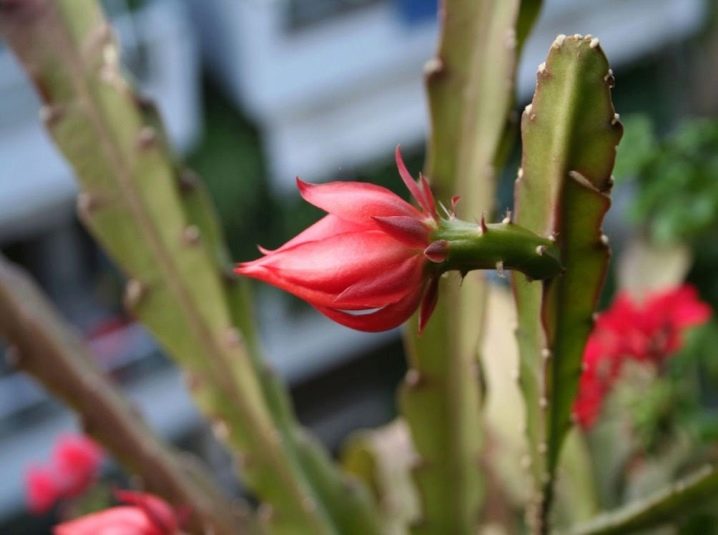
- A cactus with wavy leaves looks no less original. Scientists have concluded that it is not even a flower that looks like a cactus, or a cactus that looks like a flower. It is very difficult for a layman to determine belonging to any genus.But beautiful foliage, large red-pink flowers have nothing to do with the traditional concept of "flower", because "Epiphyllum" is a real cactus. The number of varieties of this type of plant is measured only by the variety of its color.
The color scheme is very diverse, contains many shades: from delicate cream to bright red.
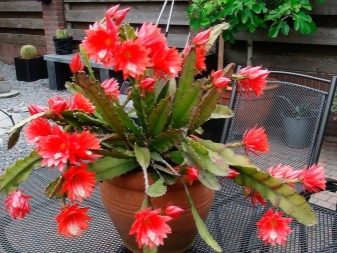
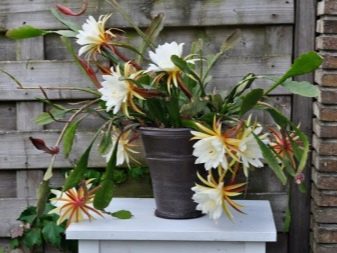
Short-leaved succulents
The flat cactus is rich in varieties, since there are up to 300 of them around the globe. They are also called "Opuntia", they are considered the most undemanding plants that are able to adapt to any habitat. The color range is rather scarce: from pale green to bright green. The stems are thickened, but widen towards the end. The thorns can be located both in groups and singly. The fleshy stem allows the accumulation of a large amount of nutrients, so the body of the cactus is very juicy.
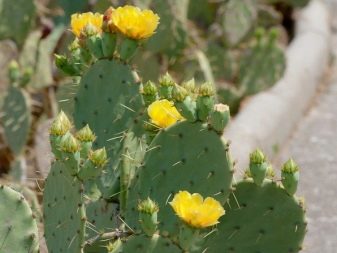

Succulents with oblong foliage
Cacti of this kind are characterized by their "longevity". The fact is that the root system of such succulents is very powerful and developed, due to the fact that it has to provide such a large area of cactus with nutrients and liquid. Plants are predominantly green in color. With large, long leaves.
Some varieties of cacti with long leaves can form small peas at the ends of their bodies, which can be mistaken for edible ones.
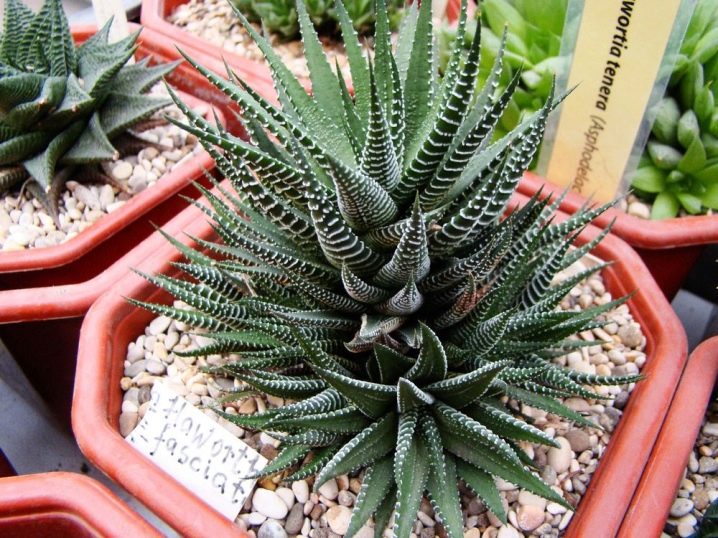
Succulents with triangular foliage
The well-known "Euphorbia" can boast of its foliage. It is he who is one of the representatives of succulents with a triangular "hair". He, like other representatives of this species, is very unpretentious, capable of germinating anywhere. Due to the bright green color, the flower is clearly visible, its stem edges are clearly visible. It has small spines and a triangular train of small leaves (up to 3 cm in size) along the entire length of the stem. Such leaves do not last long, since, due to their size and location, they can easily die from the sun, but new ones quickly appear in their place.
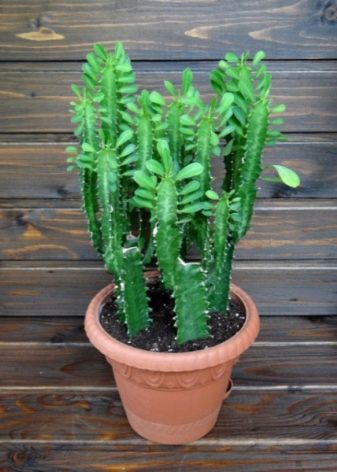
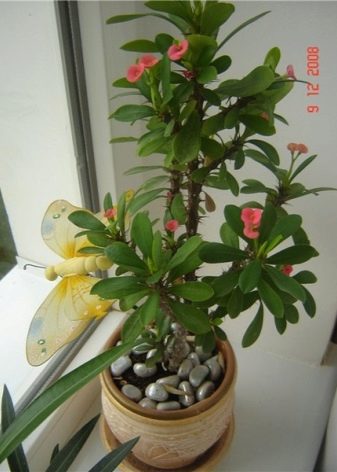
How to transplant succulents, watch in the next video.























































The comment was sent successfully.